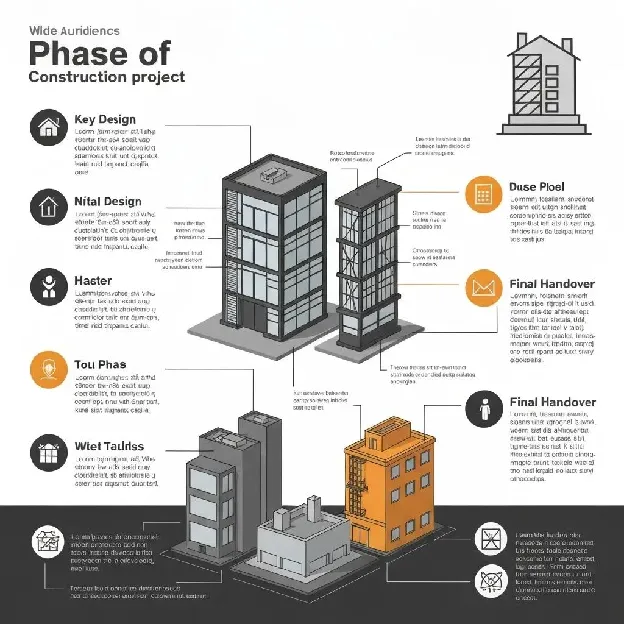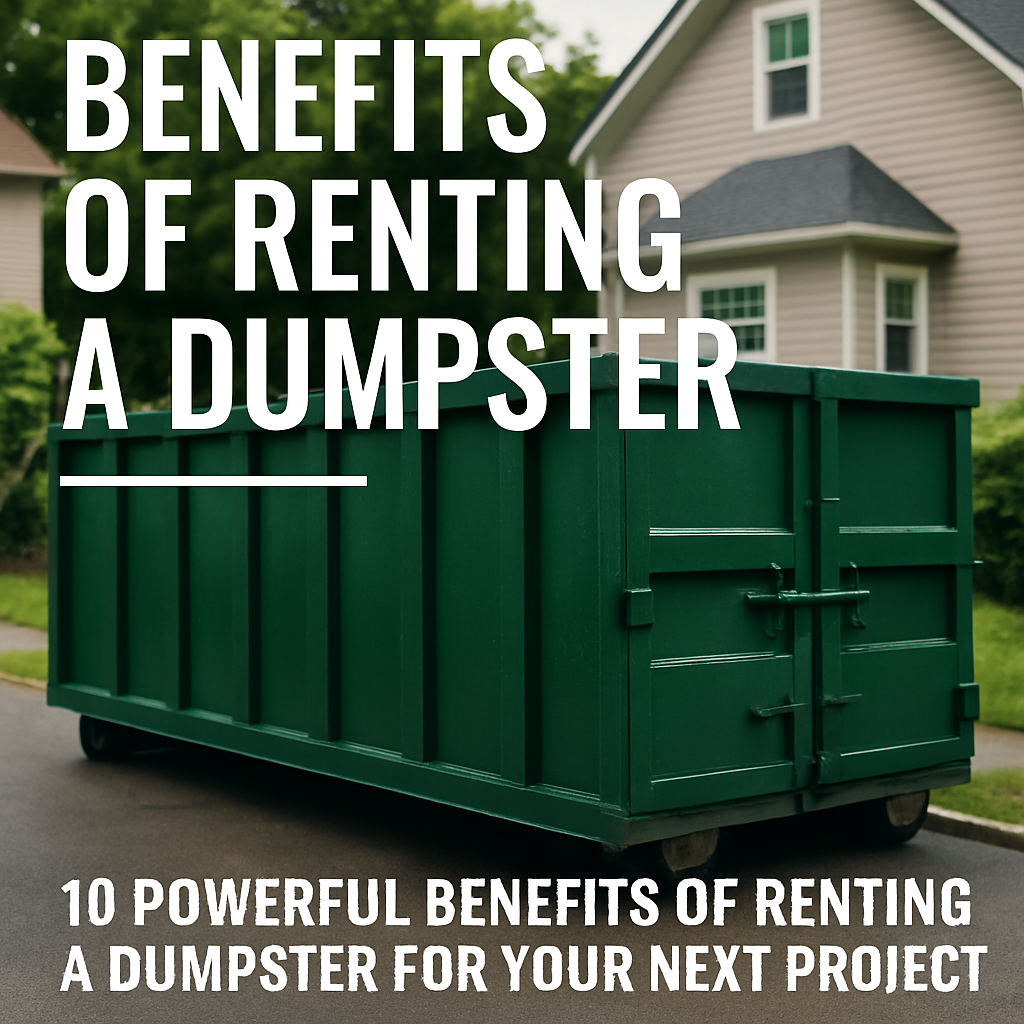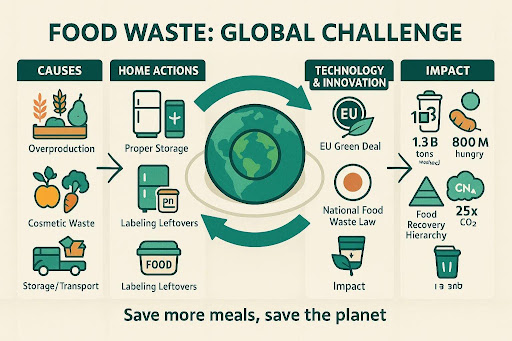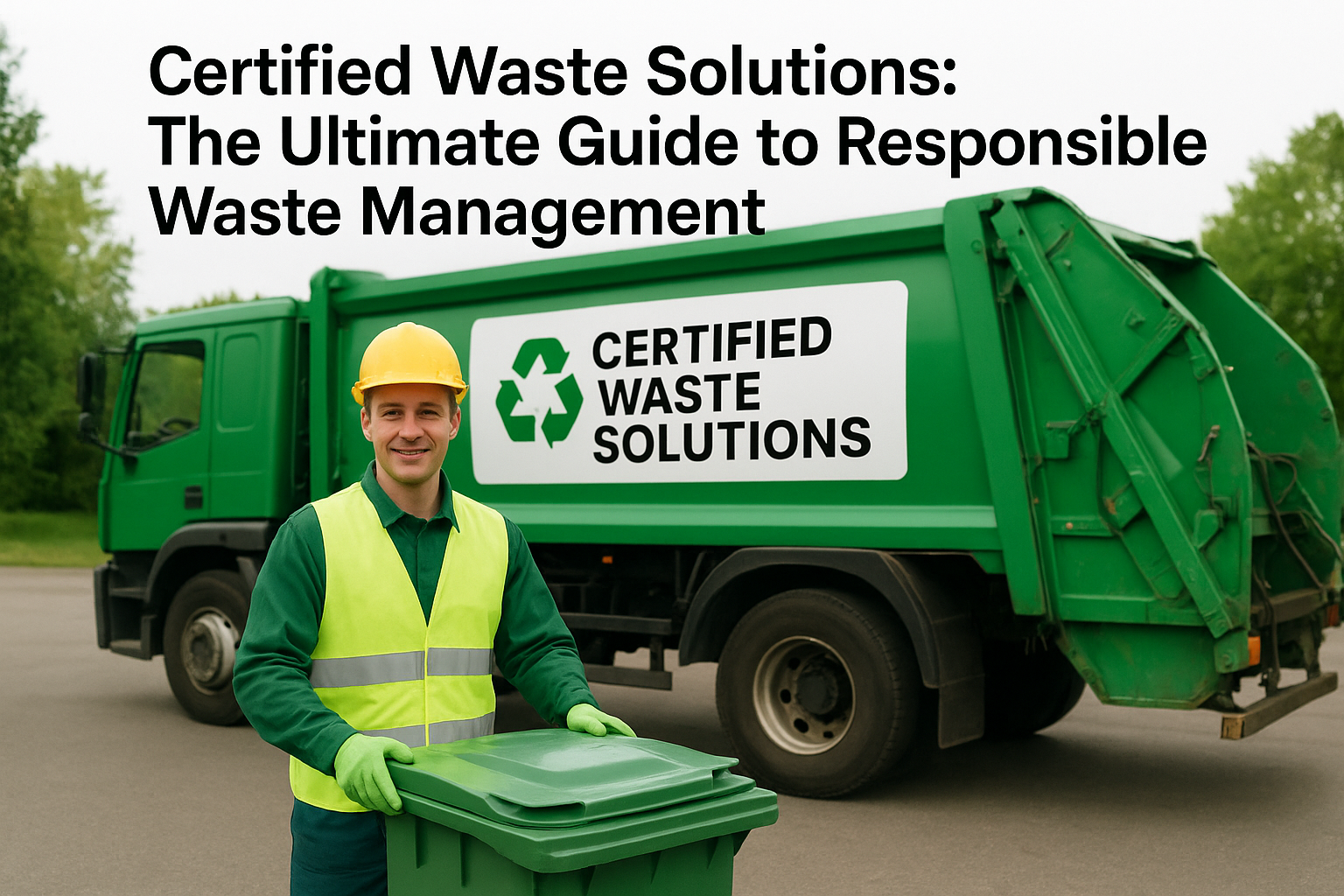
****
Businesses across North America generated over 292 million tons of municipal solid waste in 2020, highlighting the crucial need for efficient commercial dumpster rental services that boost savings and ensure operational consistency. ( statista.com ) This guide will walk you through selecting the right dumpster sizes and types, navigating the rental process, understanding pricing factors, and leveraging National Waste’s expertise to optimize your multi-location programs. We’ll also cover specialized waste streams, unified billing, and smart sustainability practices—equipping businesses with 50 to 5,000 sites to refine waste management, minimize surprises, and achieve ESG objectives.
What Commercial Dumpster Sizes and Types Are Available for Businesses?
Commercial dumpster sizes and types are key to how businesses manage, sort, and transport their waste. By offering roll-off and front-load containers in various cubic-yard capacities, companies can customize their waste streams based on project scope, waste composition, and pickup frequency—leading to better efficiency and lower disposal costs. Here, we’ll explore each dumpster category and its impact on your daily operations .
Which Roll-Off Dumpster Sizes Are Best for Large Projects?

Roll-off dumpsters are substantial, open-top containers mounted on wheels for easy loading and transport, making them perfect for construction debris and major clean-out projects. Their design allows crews to load heavy materials and haul away bulk waste efficiently, reducing site downtime and logistical headaches .
Here’s a look at common roll-off capacities and their typical applications:
| Size (Cubic Yards) | Dimensions (L×W×H) | Typical Use |
|---|---|---|
| 20-Yard | 22 ft × 8 ft × 4 ft | Medium renovations, roofing debris removal |
| 30-Yard | 22 ft × 8 ft × 6 ft | Large remodels, commercial clean-outs |
| 40-Yard | 22 ft × 8 ft × 8 ft | Major demolition, large construction sites |
Choosing the right roll-off capacity ensures your teams avoid overage fees and complete large projects on schedule, while also preparing for ongoing daily waste management needs.
What Front-Load Dumpster Options Suit Daily Business Waste?

Front-load dumpsters are enclosed containers designed for regular refuse and recycling collection, lifted by automated truck arms. By matching container volume to your daily waste output, facilities can prevent overflows, maintain a clean appearance, and optimize pickup routes —ensuring reliable service and reducing manual handling.
- 2-Yard front-load dumpsters are ideal for small retail businesses with light daily refuse.
- 4-Yard front-load dumpsters work well for offices and cafes generating moderate amounts of paper and packaging waste.
- 6-Yard front-load dumpsters are suitable for mid-sized restaurants or light manufacturing facilities.
- 8-Yard front-load dumpsters can accommodate grocery stores and distribution centers with higher waste volumes.
Selecting the appropriate front-load container minimizes on-site labor and aligns pickup frequency with actual waste generation, leading to smoother operations and reduced incidental costs.
How Do Dumpster Sizes Impact Your Business Waste Disposal Efficiency?
Choosing the optimal dumpster size involves balancing fill rates with pickup frequency to manage hauling expenses and prevent capacity issues. A dumpster that’s too small leads to extra pickups, while one that’s too large means paying for unused space. By matching container dimensions to your waste generation patterns, companies can reduce operational friction and secure the best pricing.
Key factors for efficiency include:
- Match container capacity to your weekly waste tonnage to avoid overage charges.
- Compare the cost per pickup across different container sizes to find the most economical choice.
- Assess the required on-site footprint to ensure safety and accessibility.
Effective sizing strategies lay the groundwork for a seamless rental experience and predictable cost forecasting for your commercial dumpster rental services .
How Does the Commercial Dumpster Rental Process Work for Businesses?
The commercial dumpster rental process follows a clear path: needs assessment, container selection, delivery, waste management, and pickup—ensuring businesses receive timely service tailored to their specific volumes and waste types. A standardized workflow simplifies vendor coordination and provides full visibility into service status and charges.
What Are the Steps from Needs Assessment to Dumpster Pickup?
A structured rental process guides businesses from the initial consultation to final removal, offering clarity and control at every stage: waste management services
- Conduct a thorough needs assessment to determine waste volumes and identify waste types.
- Receive a detailed rental quote and a customized service agreement.
- Schedule and arrange for the selected dumpster to be delivered to your site.
- Allow on-site filling and optional container swaps as needed based on usage.
- Coordinate timely pickup, hauling, and disposal or recycling services.
By following these steps, organizations can maintain compliance, avoid unexpected fees , and keep their operations running smoothly.
How Does National Waste Streamline Rentals for Multi-Location Businesses?
Our white label dumpster rentals for businesses with numerous locations through a unified account management platform. This centralization eliminates fragmented vendor relationships and disparate contracts, delivering consistent service levels and comprehensive reporting.
Key consolidation features include:
- A single point of contact for all service requests and escalations.
- Consolidated billing that combines invoices from all regions.
- A centralized digital dashboard for real-time pickup status and usage data.
- Standardized service protocols to ensure uniform quality across all sites.
This centralized approach empowers corporate procurement teams to manage waste costs holistically and drive efficiency across every location.
What Are the Key Considerations When Scheduling Dumpster Deliveries and Pickups?
Efficient scheduling depends on site access, waste type, local regulations, and operational schedules. Properly timed deliveries and pickups prevent service interruptions, minimize idle container days, and ensure compliance with municipal requirements .
Important considerations include:
- Confirming site access points, clearances, and designated staging areas.
- Coordinating pickup frequency based on seasonal demands or project-specific waste surges.
- Verifying acceptable waste types to avoid contamination penalties.
- Aligning service windows with business operating hours to minimize disruptions.
Addressing these factors ensures your rental schedule enhances productivity and maintains regulatory compliance across all your locations.
How Much Does Commercial Dumpster Rental Cost and What Influences Pricing?
Commercial dumpster rental pricing includes base fees, delivery and pickup charges, waste disposal rates, and any surcharges for specialized waste types. Transparent pricing models allow businesses to budget accurately and compare service providers effectively.
What Are the Common Cost Factors in Dumpster Rental Pricing?
Typical cost components for dumpster rentals include:
- A flat base rental fee for the container over a specified period.
- Delivery and pickup fees covering logistics and driver time.
- Weight-based disposal charges calculated per ton.
- Fees for additional rental days beyond the standard term.
- Fuel and environmental surcharges mandated by regional authorities.
Understanding each component helps finance teams accurately forecast monthly waste expenses .
Are There Hidden Fees or Surcharges to Watch For?
Some fees might be unexpected if not clearly outlined: extra fees
- Hazardous waste surcharges for materials requiring specialized handling.
- Contamination fees when prohibited items are mixed with acceptable waste.
- Fuel adjustment charges linked to fluctuating energy prices.
- Ancillary service fees for add-ons like container locks or compactor maintenance.
Proactively identifying these potential surcharges helps prevent unexpected invoice adjustments and supports disciplined budgeting .
How Can Businesses Optimize Dumpster Usage to Reduce Costs?
Optimizing waste costs involves strategic container management and waste reduction tactics:
- Align pickup frequency with actual fill levels to avoid paying for unused capacity.
- Consolidate compatible waste streams into a single container whenever practical.
- Implement on-site recycling and composting programs to divert waste volume.
- Conduct regular waste audits to identify overages and opportunities for reduction.
These measures not only lower rental fees but also contribute to sustainability goals and improved operational control.
Why Choose National Waste for Your Commercial Dumpster Rental Needs?
Our white label commercial dumpster rental solutions, backed by extensive experience, a robust North American network, and a commitment to clear pricing. Our expertise in multi-location programs and sustainability practices makes us a reliable partner for businesses seeking dependable, efficient waste management.
How Does National Waste Support Multi-Location Businesses with Consolidated Solutions?
By offering consolidated waste management services, National Waste manages invoicing, reporting, and logistics through a single platform—reducing administrative burdens and ensuring consistent service quality.
Key consolidated offerings include:
- Unified billing for all sites under one invoice.
- Centralized account management for streamlined service coordination.
- A dedicated customer success team focused on enterprise needs.
- Standard operating procedures to maintain uniform service quality.
This comprehensive approach simplifies complexity and empowers corporate stakeholders to drive continuous improvement.
What Sustainability and Environmental Practices Does National Waste Implement?
National Waste incorporates recycling and diversion programs into every rental solution, helping clients reduce landfill reliance and meet ESG goals . Our sustainability initiatives focus on material recovery, energy conservation, and educating stakeholders.
| Program | Focus Area | Impact |
|---|---|---|
| Mixed-Paper Recycling | Office and retail waste streams | Diverts up to 75% of paper waste |
| Composting Services | Organic food and yard waste | Reduces methane emissions by 60% |
| Employee Education | Waste-sorting training | Improves diversion rates by 20% |
By integrating these practices into routine services , businesses achieve measurable environmental benefits while managing costs effectively.
How Does National Waste Ensure Regulatory Compliance Across North America?
Navigating complex waste regulations at federal, state, and local levels requires expert oversight. National Waste ensures compliance through continuous regulatory monitoring, thorough documentation, and staff training.
Compliance safeguards include:
- Management of permit applications and renewals.
- Detailed waste manifests and chain-of-custody documentation.
- Adherence to cross-border transportation regulations.
- Regular training for drivers and site personnel on proper waste handling.
These measures mitigate legal risks and support uninterrupted operations in all service areas.
What Specialized Waste Management Services Complement Commercial Dumpster Rentals ?
To handle diverse waste streams, National Waste offers specialized services—ensuring safe, compliant management beyond standard refuse and recycling.
How Is Construction and Demolition Waste Properly Managed?
Construction and demolition (C&D) waste management involves sorting, recycling, and responsible disposal to minimize landfill impact and recover valuable materials.
Key C&D practices include:
- Separating concrete, asphalt, and wood for targeted recycling.
- Using dedicated roll-off containers designated by material type.
- Coordinating with recycling facilities to process reclaimed aggregates.
- Documenting diversion rates for sustainability reporting.
These steps reduce disposal costs and support circular economy principles in construction projects.
What Solutions Exist for Industrial and Hazardous Waste Disposal?
Industrial and hazardous waste services utilize specialized containers, licensed transport, and strict protocols—protecting people and the environment. waste management services
Core hazardous waste solutions include:
- Collection and containment of chemical and solvent wastes.
- Emergency spill response and site remediation services.
- DOT-compliant packaging and labeling for transport.
- Detailed manifest preparation and adherence to regulated disposal channels.
Implementing these solutions ensures safety, regulatory compliance, and peace of mind for high-risk waste streams.
How Do Commercial Recycling Programs Enhance Waste Stream Optimization?
Commercial recycling programs transform recyclable materials into revenue-generating streams while reducing per-ton disposal fees.
Program elements include:
- Source-separation systems for paper, cardboard, plastics, and metals.
- On-site compaction equipment to maximize container utilization.
- Partnerships with local recyclers to secure end-market demand.
- Data-driven reporting on diversion rates and cost savings.
By integrating recycling into standard services, businesses optimize waste flows and demonstrate environmental leadership .
How Can Businesses Benefit from Multi-Location Waste Management Solutions?
Enterprise-level waste programs unify strategy, data, and service delivery across all locations—offering economies of scale, operational insights , and consistent standards.
What Are the Advantages of Consolidated Billing and Reporting?
Consolidated billing combines charges from all locations into a single invoice, simplifying financial reconciliation and enabling detailed cost analysis .
- A single, comprehensive invoice replaces multiple local bills.
- Line-item details by site, container type, and service date are provided.
- Real-time dashboard access to usage and cost metrics is available.
- Custom report generation for internal audits and budgeting is supported.
This unified view empowers finance leaders to drive waste cost reductions and performance improvements.
How Does National Waste Provide National Service Area Coverage?
Our white label link building services are the best option for agencies looking for quality, scalability , and convenience. We create SEO optimized, fresh content that performs well in search rankings and boosts your clients’ site authority. All of our backlinks come from authoritative publishers. We’ll secure the quantity you need and in the right time frame.
- Service is available in all 48 contiguous states and major Canadian provinces.
- Regional hubs are strategically located for rapid response.
- Local partner integration extends reach into underserved areas.
- Emergency and same-day service options are available for critical needs.
This national footprint guarantees that multi-site businesses maintain uninterrupted waste programs wherever they operate.
How Are Tailored Waste Management Programs Designed for Large Enterprises?
Custom enterprise programs begin with a detailed waste profile analysis and result in bespoke service plans—aligned with corporate sustainability, safety, and cost objectives .
Program design steps include:
- Conducting site-level waste audits to identify stream volumes.
- Developing customized pickup schedules and container allocations.
- Integrating recycling targets and sustainability KPIs.
- Providing change management support to ensure seamless adoption.
Tailored solutions align waste management with overarching enterprise goals and operational workflows.
What Are the Best Practices for Sustainable Waste Management in Businesses?
Leading businesses adopt sustainable waste practices that combine zero-waste principles, data-driven reduction strategies, and transparent reporting—driving environmental impact and stakeholder trust.
How Do Zero Waste Initiatives and Circular Economy Principles Apply?
Zero waste initiatives aim to eliminate landfill disposal by redesigning processes, reusing materials, and closing resource loops—embodying circular economy concepts in daily operations.
Key strategies include:
- Eliminating or replacing single-use items with reusable alternatives.
- Partnering with suppliers offering take-back and refill programs.
- Implementing closed-loop recycling for high-volume materials.
- Collaborating on product redesign to facilitate material recovery.
These principles transform waste streams into resource flows and support long-term sustainability.
What Role Do Waste Audits and Reduction Strategies Play?
Waste audits provide the data foundation for targeted reduction efforts, identifying high-volume streams and waste hotspots for prioritized action.
Audit and reduction steps include:
- Performing baseline measurements of waste by weight and category.
- Analyzing trends to pinpoint overproduction or excessive packaging.
- Engaging employees through training and feedback mechanisms.
- Optimizing processes, such as lean packaging and digital document workflows.
By systematically auditing and adjusting practices, companies achieve measurable waste decreases and cost savings.
How Can ESG Reporting Support Corporate Environmental Goals?
ESG reporting structures environmental metrics into standardized disclosures, enabling transparency , stakeholder accountability, and regulatory compliance.
Key ESG reporting components include: the age of transparency ESG reporting on waste .
- Tracking diversion rates, carbon footprint, and landfill tonnage.
- Aligning metrics with frameworks like GRI, SASB, or TCFD.
- Seeking third-party verification for data credibility.
- Utilizing continuous reporting cycles to demonstrate improvement.
Robust ESG reporting enhances corporate reputation and meets investor and regulatory expectations.
Efficient commercial dumpster rental services begin with expert guidance on dumpster selection and rental workflows. Implementing specialized services, consolidated enterprise solutions, and sustainable practices drives cost savings, operational reliability, and environmental performance. National Waste’s comprehensive approach—combining multi-location coordination, transparent pricing, and regulatory expertise—ensures your business waste management delivers measurable results and aligns with your corporate sustainability goals.



